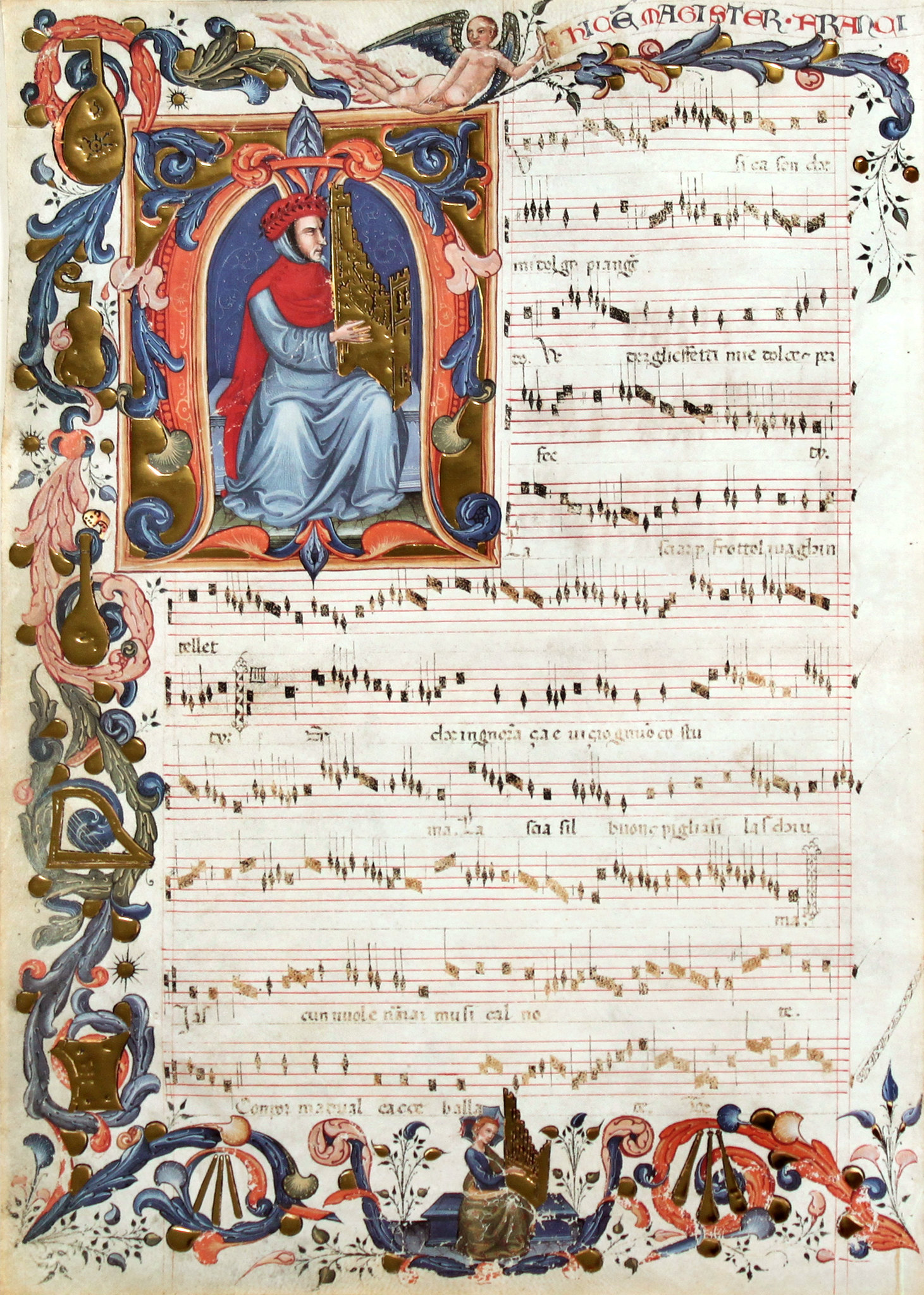ECCO LA PRIMAVERA - Francesco Landini
Francesco Landini (c. 1325 – 2 September 1397; also known by many names) was an Italian composer, organist, singer, poet and instrument maker who was a central figure of the Trecento style in late Medieval music. One of the most revered composers of the second half of the 14th-century, he was by far the most famous composer in Italy.
Details of Landini's life are sketchy and few facts can be established with certainty, but the general outline has begun to take shape as more research has been done, especially into Florentine records. Most of the original biographical data on him comes from a 1385 book on famous Florentine citizens by chronicler Filippo Villani, who was also born approximately 1325.
According to Filippo Villani, the celebrated composer Francesco Landini played several musical instruments including the organetto and the lute.

Petrarch actually played the lute, and equating it with the the lyre of Classical Greece, he imbued the cultural perception of the instrument with a rich symbolism that permeated European art, music, and poetry for centuries.
Despite his young age, Landini was already active in the early 1350s and it is likely that he was very close to Petrarch. According to Villani, Landini was given a crown of laurel by the King of Cyprus, who was in Venice for several periods during the 1360s. Landini probably spent some time in northern Italy prior to 1370.
Landini was part of a select group of humanists reflecting his personal qualities as well as the rising stature of musicians, who were transitioning from craftsmen to artists.
The guests included, among others, the Chancellor of the city of Florence, a physician, two monks, and a philosopher. Several of them had lost relatives and friends during the Black Death which ravaged Italy forty years prior, killing two-thirds of Florence’s population.
Coluccio Salutati (1331-1406) was chancellor of the Republic of Florence from 1375 until his death. Salutati is known as the “inventor of humanism” for his ability to draw on the deep roots of Antiquity while not being a prisoner of an “antiquarian” mindset — he had a fresh and original writing style formed on the classics but not slavish to them.
Coluccio Salutati
He also played a key role mentoring younger humanists. To teach them Greek, Salutati brought the scholar Manuel Chrysoloras over from Constantinople in 1397 (and ensured that the city paid him a salary). In his time, only a few Latin translations of philosophical works, arriving from Toledo and Sicily, were available. Salutati made it possible for Florentine scholars to read Aristotle and Plato in the original ancient Greek.
Salutati’s archenemy was Gian Galeazzo Visconti, the tyrannical duke of Milan who sought to unify Italy under his rule, and who once remarked that one of Salutati’s letters could “cause more damage than a thousand Florentine horsemen”.
Marsilio di Santa Sofia (1338-1405) was a renowned medical doctor belonging to a family of physicians, the Santa Sofia, who emigrated from Constantinople in 1292; his life story underscores the importance of this Eastern city in transferring knowledge to the Italian republics at the onset of the Renaissance.
Luigi Marsili (1342-1394) was an Augustinian friar at the Santo Spirito convent where the group of humanists regularly met; he was a friend of Petrach and Bocaccio. His friends had a great reverence for him due to his scientific knowledge and holy life.
Grazia Castellani (c. 1350-1401), an Augustinian friar at the Santo Spirito convent, was a theologian and mathematician. He later became ambassador of Florence to Milan and forged alliances to defend Florence in case war broke out.
Biagio Pelacani (1355-1416) was a mathematician, philosopher and astrologer from Parma. He furthered the development of perspective. His Quaestiones de perspectiva (ultimately resting on Ibn al-Haytham’s research in optics) influenced masters of the Renaissance.
The largest anthology of Florentine music of the late 14th and early 15th centuries, the Squarcialupi Codex is without equal in both content and ornamentation. It contains over 350 pieces of music, 150 of which are unique to this manuscript. Pieces in the codex are arranged chronologically by composer, with some pages left blank for the later addition of works. Each composer’s entry is accompanied by a full-color portrait of the composer, illuminated in gold. It is named after its former owner, Antonio Squarcialupi, who is eulogized on one of the original flyleaves.
 Foundation Musick's Monument
Foundation Musick's Monument